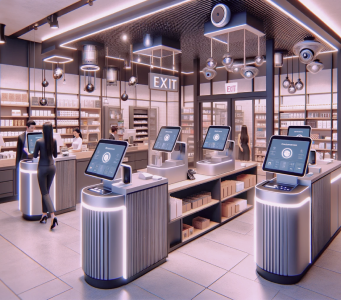Regional Pricing Intelligence: Why One Price Doesn’t Fit All
Regional Pricing Intelligence: Why One Price Doesn’t Fit All
In today’s retail landscape, pricing cannot be one-size-fits-all. What customers are willing to pay in New York may be very different from what drives conversion in Dallas or Denver. Cost structures, competitive intensity, and consumer expectations shift from one region to another, yet many retailers still apply uniform pricing strategies across their networks.

This uniformity creates a silent profitability gap. Some regions leave money on the table by pricing too low, while others lose customers to better-localized competitors. The challenge is balancing fairness with flexibility — delivering regionally optimized prices that maintain both competitiveness and margin integrity.
This is exactly where Hypersonix Pricing AI, powered by data clustering, regional elasticity modeling, and Competitor AI, helps retailers move beyond blanket pricing strategies and into the era of intelligent localization.
Before diving into how AI achieves this, it helps to understand why traditional pricing systems struggle with regional diversity in the first place.
The Problem with Uniform Pricing
For years, many retailers have relied on a single price file across all stores, eCommerce platforms, and marketplaces. This approach worked in the past because information was limited, competitors moved slowly, and consumer expectations were relatively consistent.

Today, the environment has changed dramatically. Online transparency, dynamic competition, and regional inflation make static, uniform pricing both risky and inefficient.
A grocery chain operating in California faces higher logistics and labor costs than one in the Midwest. Electronics retailers in tech-focused urban markets experience more frequent price comparisons and promotional pressure than those in smaller cities. Apparel brands may find that shoppers in coastal regions are less price-sensitive than customers in discount-driven inland markets.
When all these regions are treated equally, brands lose the precision needed to protect profitability.
This is where regional pricing intelligence transforms the game, turning what was once guesswork into data-backed strategy.
From Uniformity to Precision: The Role of AI in Regional Pricing
Hypersonix uses data clustering and predictive analytics to segment regions based on customer behavior, competitive intensity, and elasticity patterns. Instead of treating every store or ZIP code as the same, the system identifies natural clusters where pricing sensitivities align.
For example, regions with similar demographic profiles, income levels, or brand preferences can be grouped together automatically. Within these clusters, Hypersonix detects how demand responds to price changes and what local competitors are doing.
The result is a layered understanding of regional pricing dynamics:
-
Which products command premium prices in one area but need sharper positioning in another
-
Where cost inflation is impacting profitability most
-
How local promotions or competitor activity affect short-term elasticity
With this intelligence, retailers can set differentiated but coherent regional prices that optimize both revenue and perception.
This level of precision would be impossible to achieve manually. AI not only finds patterns but continuously updates them as new data arrives, ensuring pricing stays relevant in changing market conditions.
Understanding the value of regional differentiation is only the first step. Turning that understanding into action requires a system capable of processing vast, varied data and translating it into precise, explainable strategies, exactly what Hypersonix is designed to do.
How Hypersonix Regional Pricing Intelligence Works

1. Regional Data Clustering
Hypersonix uses advanced clustering algorithms to identify natural groupings of markets based on sales behavior, competition density, income distribution, and demand patterns. These clusters become the foundation for localized pricing zones, replacing outdated geographic assumptions with real behavioral data.
For instance, two cities that are hundreds of miles apart may belong to the same pricing cluster if they share similar elasticity and competitive environments. Conversely, two neighboring towns might require different strategies if their shoppers respond differently to promotions or pricing cues.
2. Predictive Elasticity Modeling
Once clusters are defined, Hypersonix’s elasticity engine measures how sensitive demand is to price changes within each one. This modeling helps retailers understand where prices can stretch without losing sales and where small increases could trigger churn.
By combining elasticity with clustering, retailers gain the ability to localize prices confidently — knowing that each adjustment reflects both behavioral data and regional realities.
3. Competitor AI and Market Context
Regional pricing is not only about understanding customers but also competitors. Hypersonix Competitor AI monitors local pricing patterns across marketplaces and direct competitors, revealing where price positions are strong or vulnerable.
This ensures that every localized strategy remains grounded in market context. If competitors in one region begin discounting aggressively, Hypersonix alerts teams to assess whether a response is warranted based on elasticity and margin impact.
4. Explainable Intelligence and Transparent Decisions
Every pricing decision is backed by explainable AI that outlines why a change was recommended and what financial effect it will have. Teams can see whether a price shift is driven by demand elasticity, competitive action, or cluster-specific trends. This transparency builds confidence and makes localized pricing a collaborative, cross-functional process rather than a black-box adjustment.
These capabilities don’t just refine pricing logic, they transform how retailers operate. By combining intelligence, automation, and transparency, Hypersonix turns regional complexity into a source of control and confidence.
From Fragmentation to Control: The Benefits of Regional Pricing Intelligence
Implementing regional pricing through Hypersonix delivers three key advantages:
1. Higher Margins Without Customer Backlash
Localized pricing enables brands to charge appropriately for regional demand while maintaining fairness. Customers in each market feel pricing aligns with their expectations, while retailers recover lost profit where the market can bear more value.
2. Smarter Competitive Positioning
Rather than reacting uniformly to nationwide competitor moves, retailers can respond selectively by region. This prevents over-discounting and helps brands maintain price credibility without unnecessary margin sacrifice.
3. Operational Efficiency and Scalability
AI-driven clustering means teams no longer need to manually segment regions or track local conditions. Hypersonix automates these insights continuously, freeing pricing analysts to focus on strategy and innovation.
In short, regional pricing intelligence turns market complexity into clarity and transforms pricing from a blunt tool into a precision instrument.
Of course, insight alone isn’t enough. Even the most accurate regional recommendations lose value if they aren’t executed consistently across every sales channel. This is where precision meets performance.
Bringing It All Together: Strategy Meets Execution
Setting the right regional prices is only half the equation. Ensuring those prices are executed accurately across stores, digital platforms, and marketplaces is equally critical.

Through Price Execution Monitoring, Hypersonix validates that localized price updates are live and consistent everywhere customers shop. If a mismatch occurs, such as a regional price failing to update on an eCommerce site, the system flags it instantly so teams can correct it before it affects conversion or trust.
By connecting intelligence with execution, Hypersonix closes the loop between insight and action, making regional pricing not only smarter but more reliable.
Conclusion: Precision is the New Fairness
Uniform pricing once symbolized simplicity, but in today’s data-driven retail world, it represents missed opportunity. Customers expect fairness, but fairness does not always mean sameness.
With Hypersonix Regional Pricing Intelligence, retailers can balance both. They can align prices with local realities, adapt to market context, and maintain profitability, all with the confidence that every decision is backed by explainable, predictive intelligence.
The future of pricing is not about treating every region equally. It’s about treating every market intelligently. And with Hypersonix, that intelligence is already within reach.

.png)




